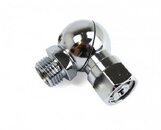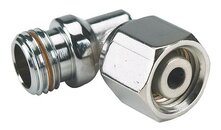DaleC
Contributor
I think the snorkel haters are the ones who is only fixated on one type of diving. Sure, if you only dive from a boat, and will get picked up from a boat, snorkels aren't really a part of the schedule. Also applicable to cave diving. I likewise don't advocate wearing a snorkel off the mask if you aren't going to use it as an integral part of the dive. There is a difference between saying: "snorkels are not relevant to my way of diving" and saying "snorkels are not relevant to diving".
If it's not needed, don't bring it. If it may be needed, clip it off or stick it in a pocket like an smb. If it's a planned part of the dive attach it. Just because some people use it (or attach it) without skill doesn't render the tool non valuable. But I ask, where did they learn that? Do dive professionals present skilled information to students (gained via experience) or just ignore the potential and say "always wear it or throw it on the shelf after training" like someone who lacks experience. Is that something a dive professional should understand or that a non professional should point out on the internet.
Those who think the historical use of snorkels, or skindiving, is accidental or non relevant sort of miss the bigger picture and that's why they make incorrect comments. It's not the snorkel that is so important but the hours and hours one spends in the water becoming used to that environment that is. Sure you don't need that. You can spend the first part of your expensive SCUBA training struggling with putting your face in the water, learning how to equalize, clear the mask, getting freaked out by some water in the mouth etc... or you can already be competent in dealing with those issues. You can make your first ocean dive the first time you've been under scary water, the first time you've been in current, the first time you've been in waves, stressed while also being task loaded with 70-80lb's of awkward gear or... make it a natural extension of what you are already used to. For someone to consider themselves progressive and miss that is pretty weird.
But, if you don't personally like skindiving, or can't make money off people spending time doing it, I can see why one would minimize it's importance.
If it's not needed, don't bring it. If it may be needed, clip it off or stick it in a pocket like an smb. If it's a planned part of the dive attach it. Just because some people use it (or attach it) without skill doesn't render the tool non valuable. But I ask, where did they learn that? Do dive professionals present skilled information to students (gained via experience) or just ignore the potential and say "always wear it or throw it on the shelf after training" like someone who lacks experience. Is that something a dive professional should understand or that a non professional should point out on the internet.
Those who think the historical use of snorkels, or skindiving, is accidental or non relevant sort of miss the bigger picture and that's why they make incorrect comments. It's not the snorkel that is so important but the hours and hours one spends in the water becoming used to that environment that is. Sure you don't need that. You can spend the first part of your expensive SCUBA training struggling with putting your face in the water, learning how to equalize, clear the mask, getting freaked out by some water in the mouth etc... or you can already be competent in dealing with those issues. You can make your first ocean dive the first time you've been under scary water, the first time you've been in current, the first time you've been in waves, stressed while also being task loaded with 70-80lb's of awkward gear or... make it a natural extension of what you are already used to. For someone to consider themselves progressive and miss that is pretty weird.
But, if you don't personally like skindiving, or can't make money off people spending time doing it, I can see why one would minimize it's importance.







